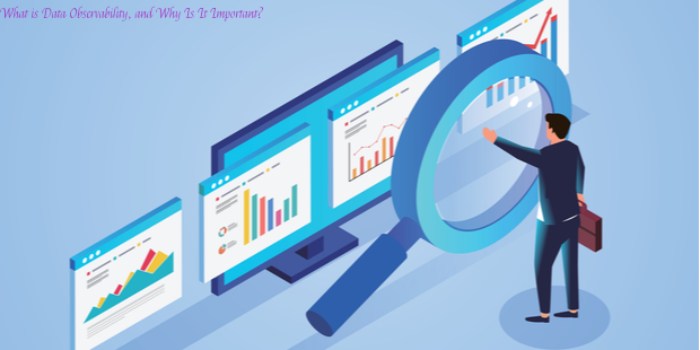Why Is Data Observability Important and What Does It Mean?

What is Data Observability, and Why Is It Important?
Because its insights inform critical business choices, data is becoming one of a company’s most important assets. This information must be precise, of the highest caliber, and trustworthy. Understanding your data’s health is crucial to ensure it is not missing, utilized improperly, or added in error, even though acquiring data insights is necessary. Thanks to data observability, your business can monitor, track, and find problems with its data systems and data before they result in downtimes.
Table of Contents
1. Why is data observability critical?
Data observability refers to a company’s capacity to comprehend the state of its systems and data completely. Thanks to great data observability, your business has total visibility into its data pipelines. The ability to analyze data flow within the organization and identify data obstacles to prevent data discrepancies and downtimes also empowers teams to develop processes and tools.
- Observability of data is essential.
- View of the complete data pipeline
Data observability uses the greatest DevOps and observabilty concepts to provide an end-to-end data pipeline view while obviating data downtime. Detect and evaluate data quality and discoverability issues; this entails applying alert, triaging, and automated monitoring.
It can be challenging to manage a damaged data pipeline or data issue. Your team is likely to endanger the experiments, the stakeholders’ confidence, and the objectivity of the analytics when they are unaware that something went wrong in the data pipeline or that the data has been changed.
Your DevOps team may acquire an end-to-end data pipeline perspective and have split-second reaction speeds when something goes wrong with the help of a data observability platform like Streamdal. Providing them with explanations for why things are malfunctioning also enables them to see beyond performance indicators.
2. Information on the functioning and health of data systems
Data observability aids your team in preserving the volume, distribution, information, freshness, and lineage of your data while keeping a regular pulse on it. The IT department can utilize observability monitoring to assist businesses with many disconnected technologies in gaining insights into the performance and health of their systems.
Streamlining root cause analysis is one of the main benefits of data observability. Your teams can quickly identify data issues and bottlenecks, regardless of source, by enabling end-to-end data monitoring and visibility across a complex IT architecture.
3. Reduces the danger of erroneous reporting and analytics
Businesses can identify anomalies in data and automatically notify the appropriate users of warnings that could result in dangerous data events thanks to data observabilty. This can help your organization be more proactive in resolving any data concerns that could disrupt operations and cause costly later problems.
4. Boosts confidence in data for critical business decisions
While data insights and machine learning algorithms might be helpful, inadequate data management and mistakes can be fatal for your company. On the other hand, data observabilty enables your business to monitor and track circumstances swiftly, enhancing confidence when making data-driven decisions.
5. Assures data reliability, value, quality, and accuracy
Your data team can use data observability to ensure that data value, accuracy, and quality aren’t compromised. They can use it to see if data pipelines are functioning correctly. Without a thorough plan for data observability, analytics and data teams may find it challenging to ensure pipeline dependability and data consistency using an agile and iterative methodology or to undertake centered root cause analysis that produces prompt and efficient solutions.
Endnote
Any organization that uses data must prioritize data observability. For these advantages, think about investing in data observability.




